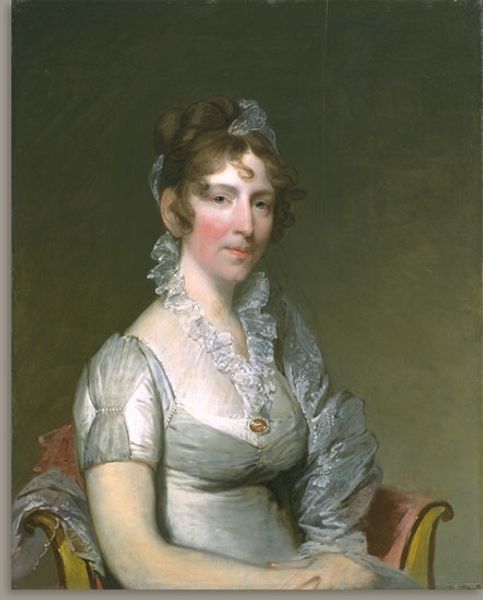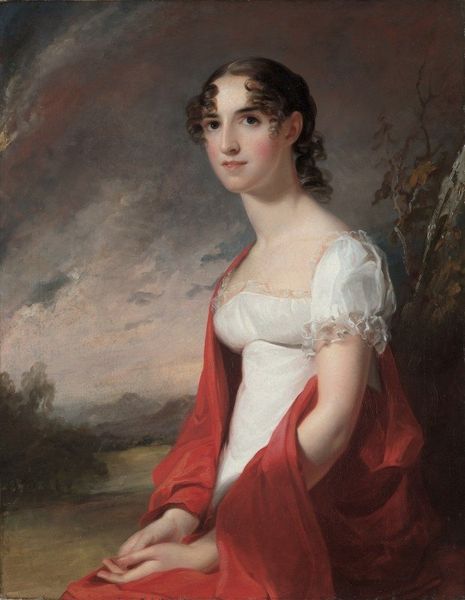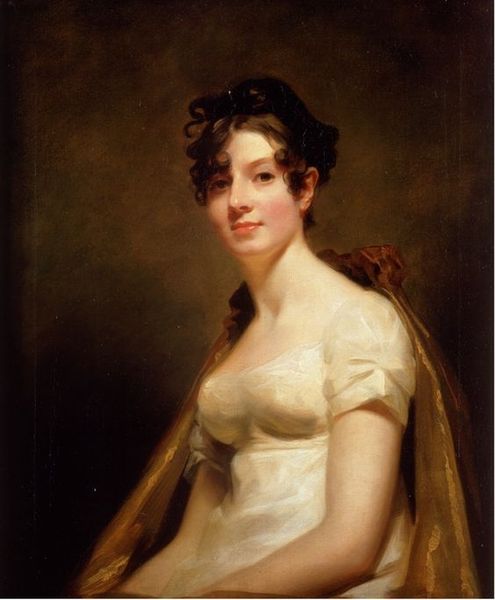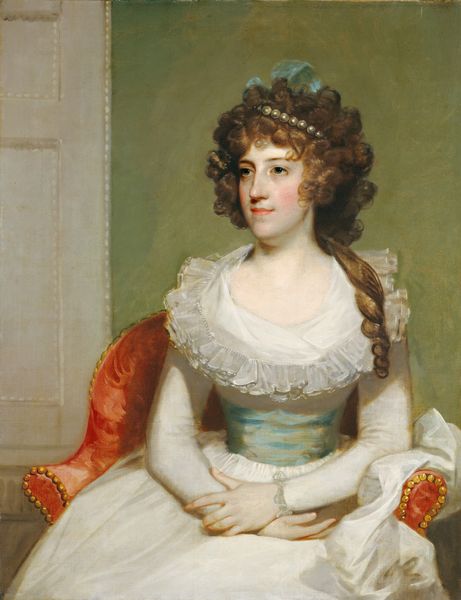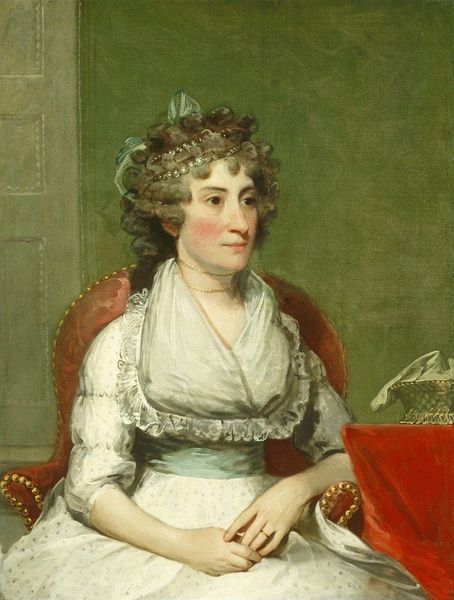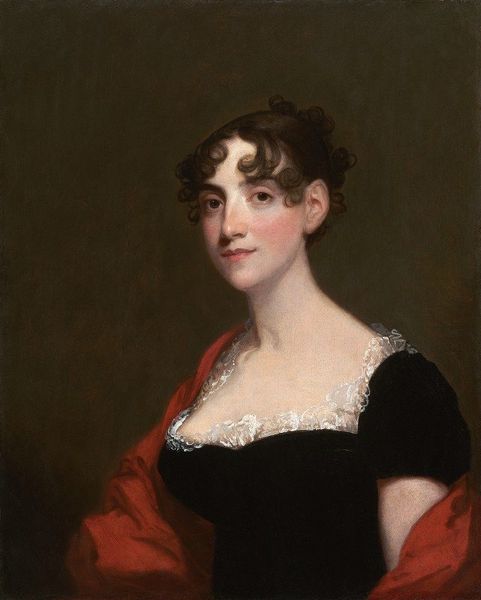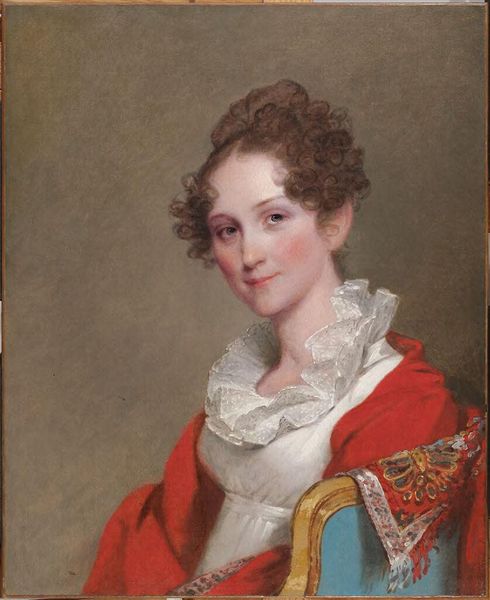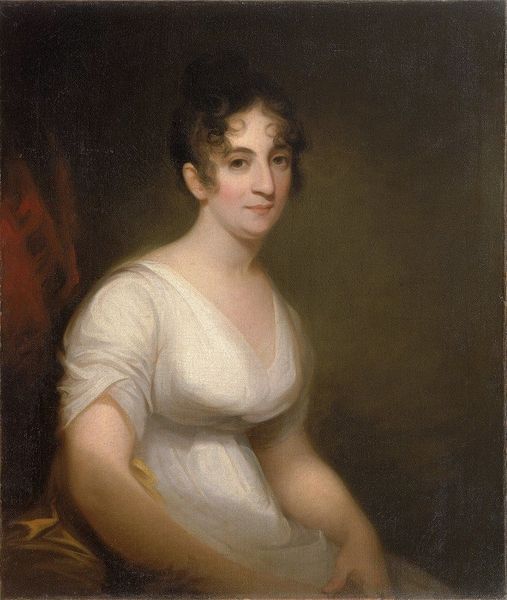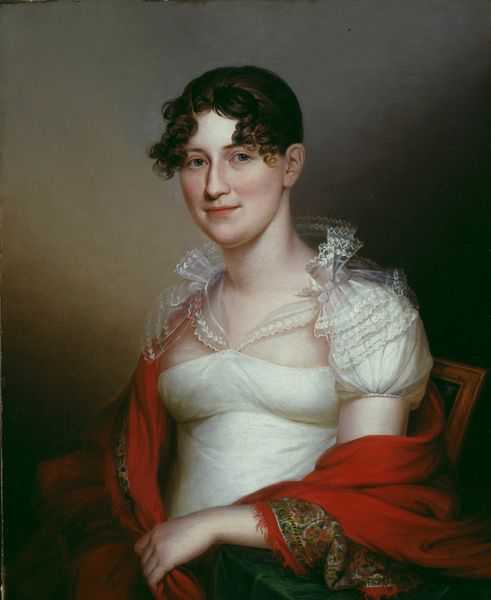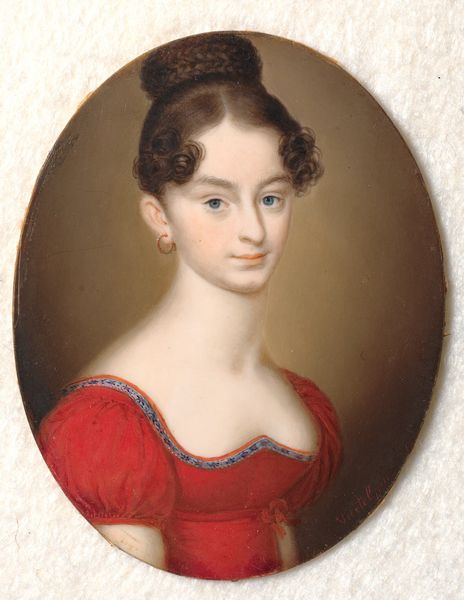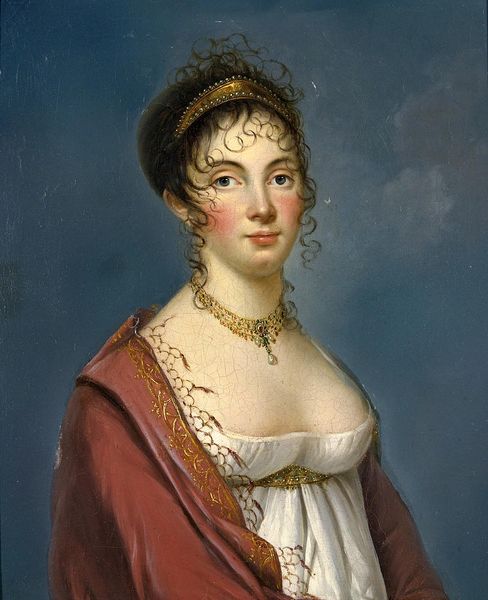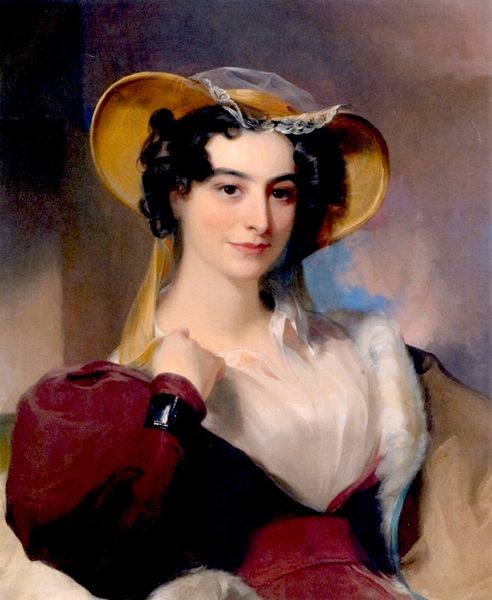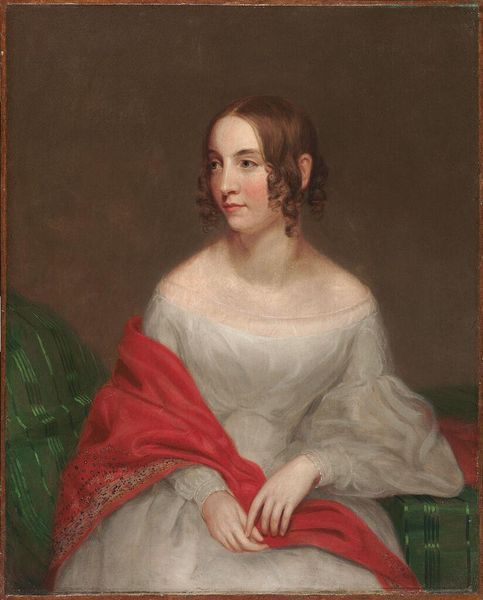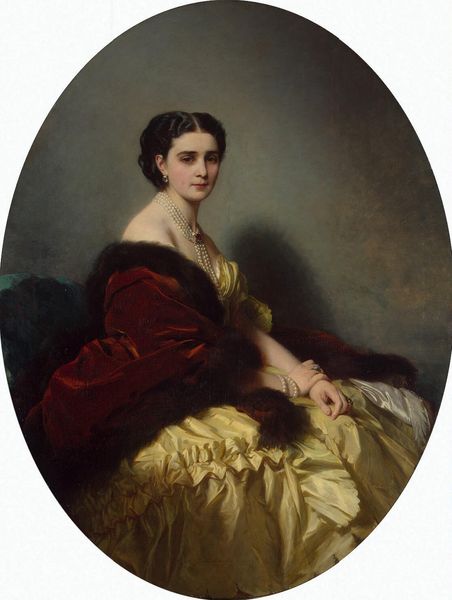
painting, oil-paint
#
portrait
#
painting
#
oil-paint
#
romanticism
#
academic-art
#
realism
Copyright: Public domain
Curator: Before us hangs Gilbert Stuart's "Margaret Crease Stackpole Welch," painted in 1815. What strikes you immediately? Editor: She's lovely, in a quiet, unassuming way. There’s a slight melancholy about her; it's there in her soft gaze and the way the light catches her face. Like she's about to whisper a secret. Curator: Interesting. Formally, the composition relies heavily on a subtle play of contrasts. Consider the coolness of her white dress against the warm, almost fiery, red shawl draped around her. It is echoed by her subtle skin tone against the very controlled and darker background. Editor: It's that shawl, isn't it? A burst of color that hints at a passion simmering beneath that restrained exterior. The rest of it does feels very carefully controlled, like everything is where it needs to be, you know. Every curl perfectly in place... Curator: Stuart was, of course, a master of capturing likeness. Notice the meticulous detail in rendering her features. The soft blush of her cheeks, the delicate rendering of her hair – it all contributes to a very realistic depiction. Also observe the light on the shoulder. It’s creating an oval composition which provides a very harmonious picture. Editor: Oh, he nails the likeness for sure. But it's more than just accuracy, wouldn't you say? It’s like he's trying to capture something of her spirit. That slight upward tilt to her lips suggests wit. I wonder what stories she carried. Curator: Certainly. And, Stuart employs classical portrait conventions of his time – the three-quarter view, the restrained palette, creating this very refined impression and overall image. This technique connects her with a legacy of European aristocratic portraiture. Editor: To think of all the things hidden within one’s expression... Makes you feel humbled. It is amazing to see that in one small painting with a seemingly very proper, normal lady from back when. Curator: Indeed. The painting serves as a historical artifact and as an object with aesthetic merit. Editor: Absolutely. Each viewing peels another thin layer and you start seeing more.
Comments
No comments
Be the first to comment and join the conversation on the ultimate creative platform.
